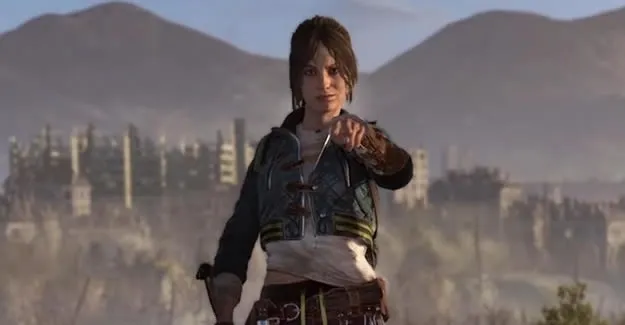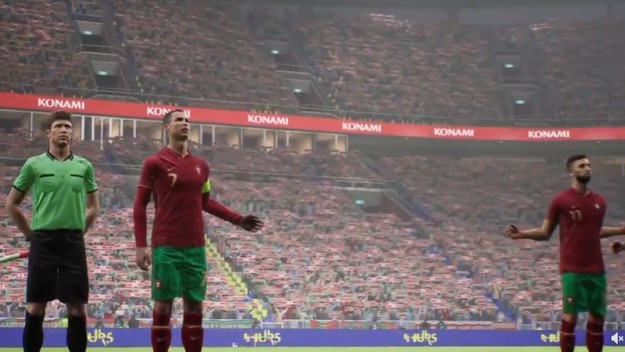Technologies powered by Nvidia Ampera 2
For competitors and streamers
Lag, that is, latency, is the period from acting on a mouse, keyboard, or controller to its effect on the game and display on the screen. From the time that elapses from pressing the mouse button to the goal, it depends on whether the bullet hit another player or ended up in the wall. Latency can be a network or system: the former depends on your ISP and network equipment, and you can't influence it other than getting a quality router or changing ISPs. System latency, on the other hand, depends on your computer, above all, on the speed and quality of its components.
Latency is affected by literally everything, from the mouse, through the graphics card and processor, to the monitor. We can reduce it in several ways, but the most efficient is the purchase of components that provide play in a larger number of frames per second. In translation - the faster the processor and the higher the quality of the GPU, the more frames! But sometimes even that is not enough, because even the fastest components do not work in the ideal mode by default.
Nvidia Reflex is a set of technologies that are specifically designed to reduce system lag through synchronization of game frame rendering between the processor and GPU. Eliminating idle in the calculation and plotting of each frame has a significant impact on reducing system lag - the difference between 15 ms and 50 ms is as big as a house for any serious fan of multiplayer shooters.
Another component of this system is the Nvidia Reflex Latency Analyzer, software that works in correlation with a compatible mouse and a corresponding G-SYNC monitor and serves for in-depth analysis of all components of system latency.
The latency analyzer is intended for professional e-sports teams who want to discover in which segment they generate the most lag and optimize their PC configurations. This requires a latest-generation G-SYNC monitor capable of 360 fps - not exactly cheap, but drastically cheaper than the 1000 fps camera traditionally used for this purpose (5000+ USD).
So far, we have focused on gamers, but the Ampere GPU family also brings attractive innovations to streamers, which by simply purchasing a compatible graphics card get access to free software solutions that can replace complex and expensive studio hardware. Nvidia Broadcast is a streamer tool that provides an AI-assisted replacement for a green screen, studio microphone, and stationary gimbal camera.
It is a universal plug-in that works in cooperation with popular streaming services (say, Twitch), bringing the possibility of AI assistance through three units/options. A virtual Background is an option that replaces an expensive green screen, allowing you to replace or blur the background with a single click. You can use a picture or animation of your choice or play the gameplay of the game you are currently playing as a background.
You can also simply do something similar to portrait mode on your phone, putting your face (and torso) in focus and blurring the background, which looks very effective. Another option is Noise Removal, which makes a smart mic out of any microphone, eliminating external noise of any intensity, whether it's clicking on the mechanical keyboard, the rumble of the TV in another room, or the neighbor drilling the walls.
Finally, there’s Auto Frame, a feature that turns a fixed webcam into a software simulacrum of a selfie camera on a gimbal that tracks facial movements. This is ideal for streamers who fidget in a chair and want the camera not to lose focus as they move in all directions. Nvidia broadcast actively uses the Tensor core for all of the listed AI functions, so it requires you to have a GeForce RTX, TITAN RTX, or Quadro RTX GPU.
For filmmakers who are not satisfied with the simple streaming of content and want a more complex artistic expression defined by post-production, there is a tool called Nvidia Omniverse Machinima. What is machinima, you may be wondering? These are films that are created by using visual assets from games to create an author's visual story in film expression.
They have been around since the 1980s and have long since become an unavoidable part of popular culture, but only now, with the advent of Nvidia software, can a total amateur be involved in machine creation. The thing works like a very simplified Maya or similar animation software, in which you extract 3D models, maps, and other visual elements from supported games and combine/animate them as desired.
You can animate 3D models with the AI pose estimator, a tool that translates your camera-recorded movements into a 3D model. An integral part of the package is the Audio2Face tool, which automatically synchronizes 3D models of faces with speech. Rendering completed scenes is lightning fast if you have any RTX card, which performs hardware computing with the assistance of hardware ray tracing.















